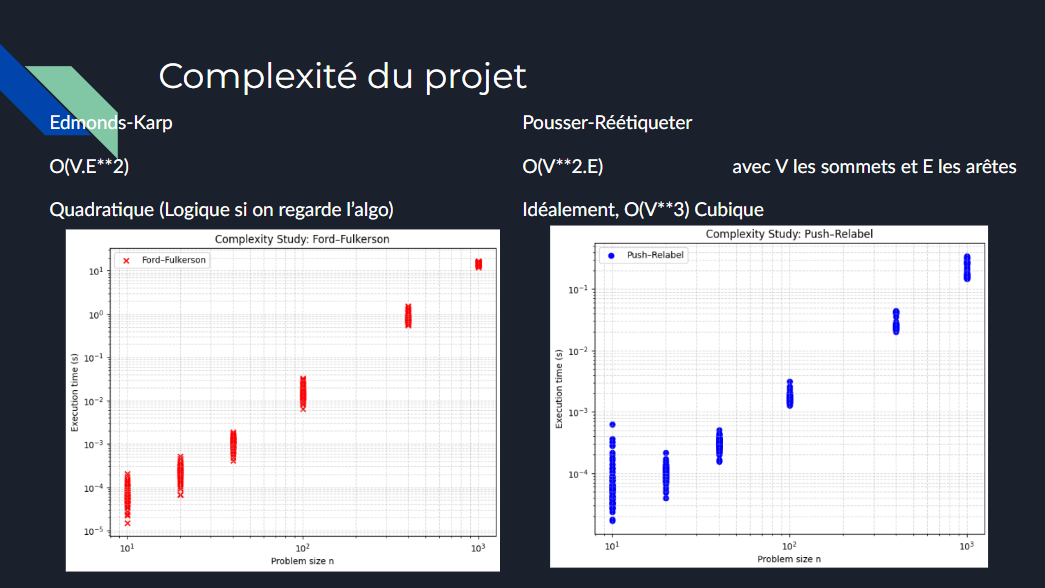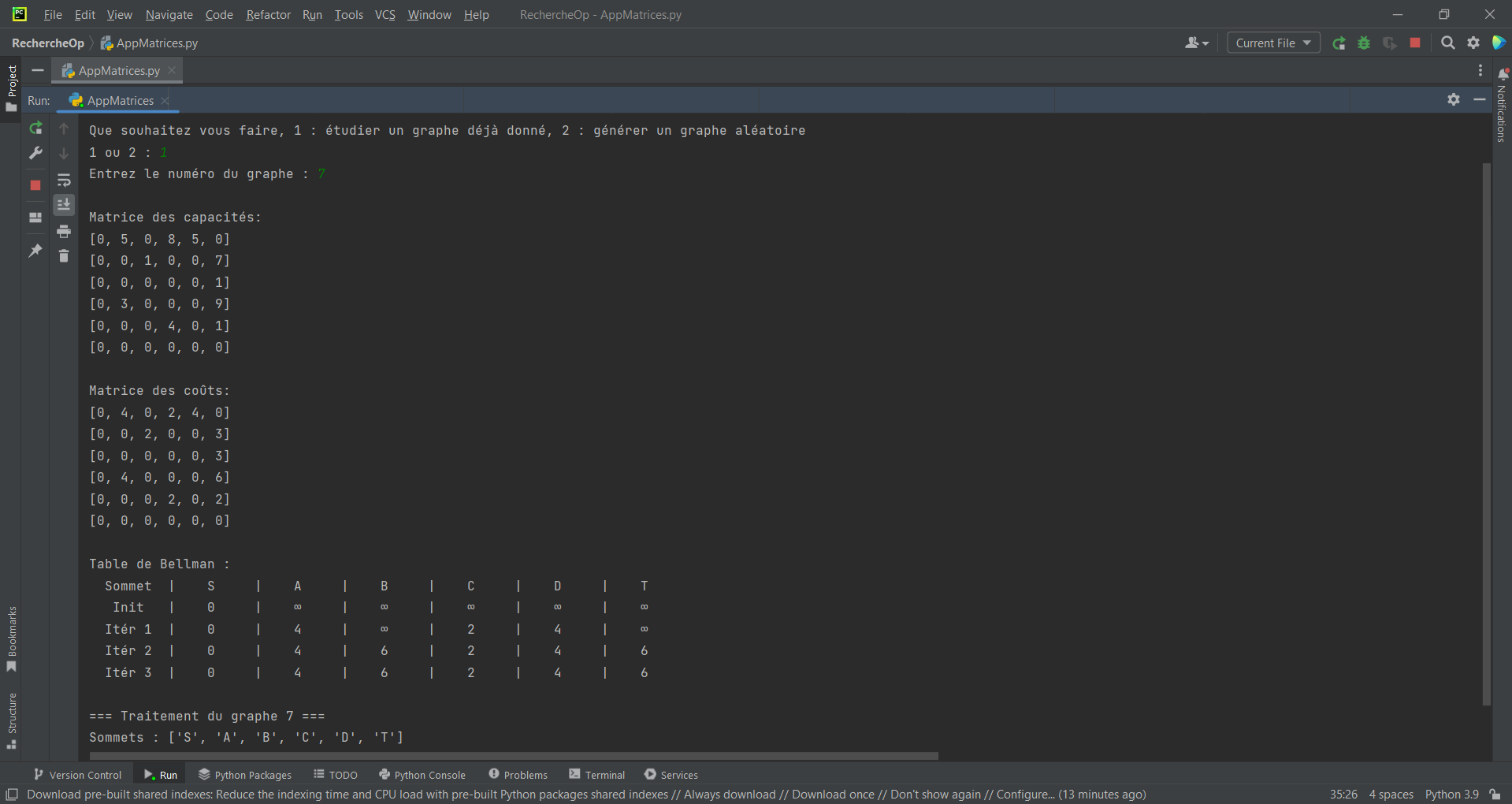As part of the Operations Research course, this project has two parts: implementing and solving flow problems (computing the maximum flow and the minimum-cost flow for a given value), and then analyzing the complexity of the algorithms and measuring their performance (execution time and result consistency).
Project: Operations Research
Project Objective:
Visual Demonstration



Algorithmic Structure
Start the program
// Choose an action
Choose between:
1. Study an existing graph
2. Create a random graph
If "Study an existing graph" is chosen
Enter the graph number (e.g., 1, 2, 3...)
If the graph has associated costs (number > 5)
Choose a method:
1. Compute maximum flow (Edmonds-Karp)
2. Compute maximum flow (Push-Relabel)
3. Compute minimum-cost flow
If "Minimum-cost flow" is chosen
Enter the desired flow value
Else
Choose a method:
1. Compute maximum flow (Edmonds-Karp)
2. Compute maximum flow (Push-Relabel)
View the results:
- Final matrix
- Flow
- Cost (if applicable)
- Execution time
If "Create a random graph" is chosen
Choose between:
1. Simple test
2. Multiple tests (100 graphs)
Enter the graph size (number of vertices)
If "Multiple tests" is chosen
Enter the desired flow value
Choose a method:
1. Compute maximum flow (Edmonds-Karp)
2. Compute maximum flow (Push-Relabel)
3. Compute minimum-cost flow
If "Minimum-cost flow" is chosen
Enter the desired flow value
View the results:
- Final matrix
- Flow
- Cost (if applicable)
- Execution time
If multiple tests:
- Average execution time
End the program
Detailed Explanation of the Project
Implemented algorithms and their complexities:
- Edmonds-Karp (Ford-Fulkerson with breadth-first search): finds an augmenting path using BFS. Worst-case complexity is O(V·E²), where V is the number of vertices and E is the number of edges.
- Push-Relabel: manages excess flow by locally adjusting vertex heights. Complexity is O(V²·E), often more efficient for dense graphs where E≫V.
- Minimum-Cost Flow: uses Bellman-Ford to find the lowest cost path at each step. Typical complexity is O(F·E·V), where F is the desired flow value.